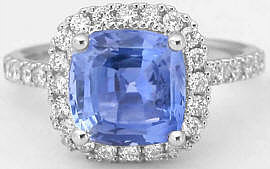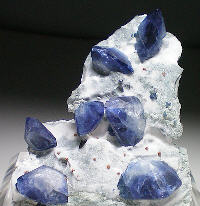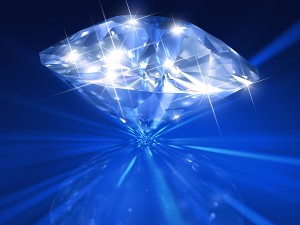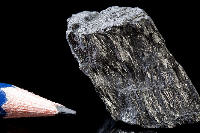Besides being rare and beautiful, gemstones also need to be durable. There are many beautiful things in this world but most are not durable. Examples are a flower, a butterfly, or a elaborately decorated wedding cake (or for me, a plate of fresh chocalate chip cookies). A gem should last and hold its beauty for the lifetime of the wearer and beyond.
One of the factors used to measure gemstone durability is the Mohs scale of hardness. Hardness measures resistance to scratches. Since a diamond can scratch every other mineral, it is rated the highest on the scale with a value of 10 on the hardness scale. The next hardest gem is corundum, which are sapphires and rubies. These gems are rated a 9. You might think that the difference in hardness between a diamond and a sapphire is very close because one is rated a 10 and one is rated a 9. But, a diamond is actually about 140 times harder than a sapphire. As a general rule of thumb, gemstones with a hardness of 7 or greater, including ruby, topaz, aquamarine, tourmaline, among others, are good choices for a ring or bracelet. For softer gems, like pearl or apatite, it’s better to enjoy them in earring, pendant, or necklace form.
Hardness is not the only factor that contributes to a gemstone’s durability; another factor is toughness. Toughness means resistance to chips, nicks, cracks or breaks. Toughness and hardness are actually very different. Toughness is rated from exceptional to poor. One of the toughest gems is jade and one of the least tough gems is amber. So if you were to drop a piece of jade on the ground, it would likely not break, but with the amber, it would be another story. It could easily break into many pieces. There are some other considerations when evaluating the durability of a gem.
This blog is dedicated to discussing everything gemstone. We plan to cover every aspect of gemstone mining, gemstone treatments, gemstone jewelry, and use of gemstones in gemstone engagement rings– a wonderful alternative to diamond engagement rings.




